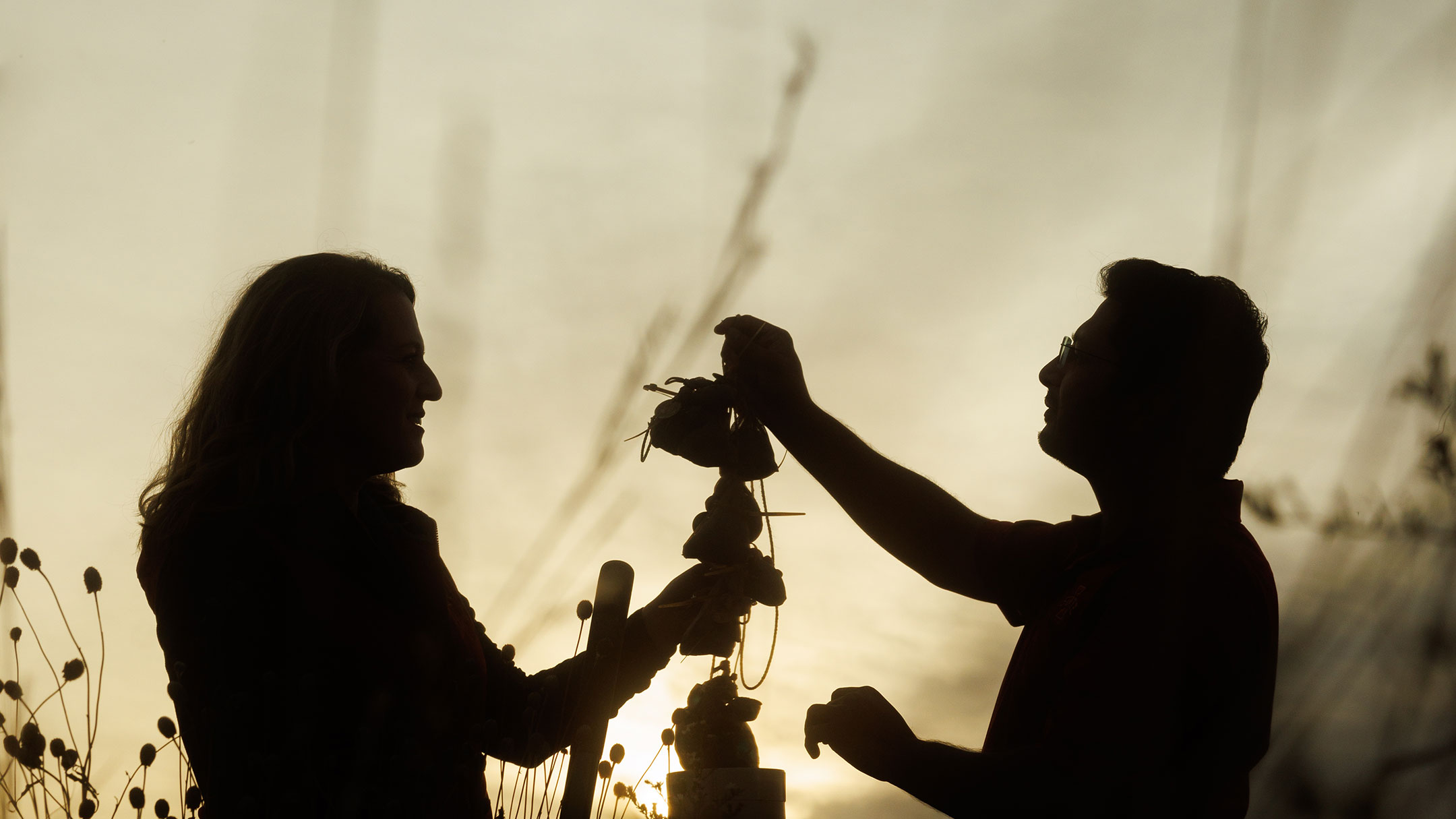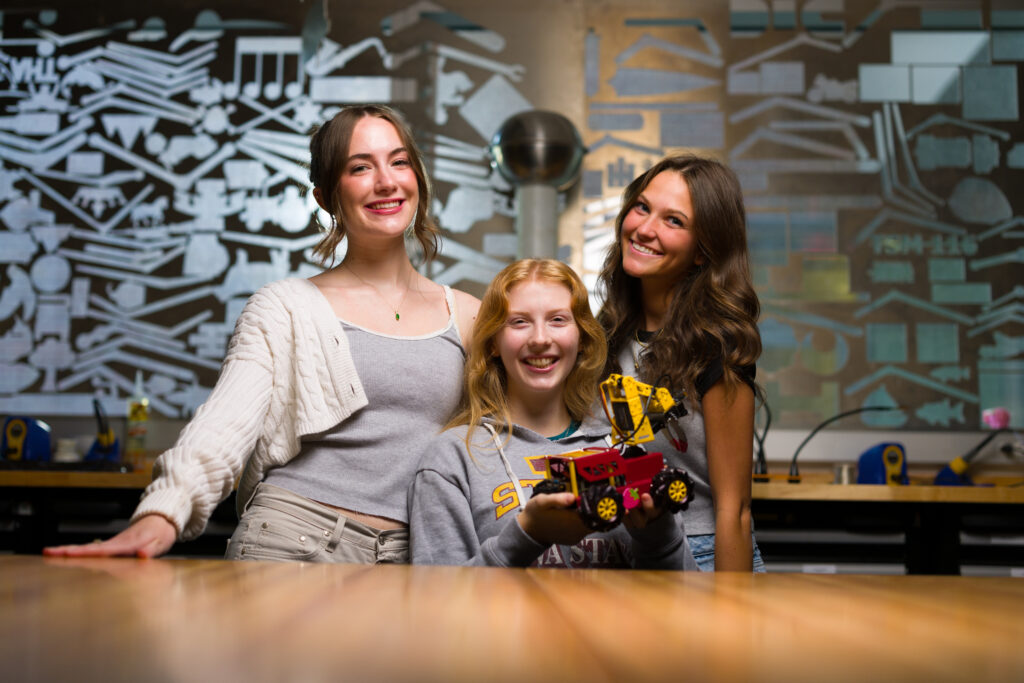Pictured above left, Michelle Soupir is …. Read the full story.
2024 Impact Report
In this issue
- Letter from the chair
- By the numbers
- Awards
- International entrepreneur, researcher, product developer – and student
- BSE program in play, every day
- The Digital Ag Innovation lab connects industry challenges to novel solutions
- Engineering for the farmers
- Simulating stress to safely feel the heat
- International recognition, local impact: Michelle Soupir
- Cyberry Shortcake
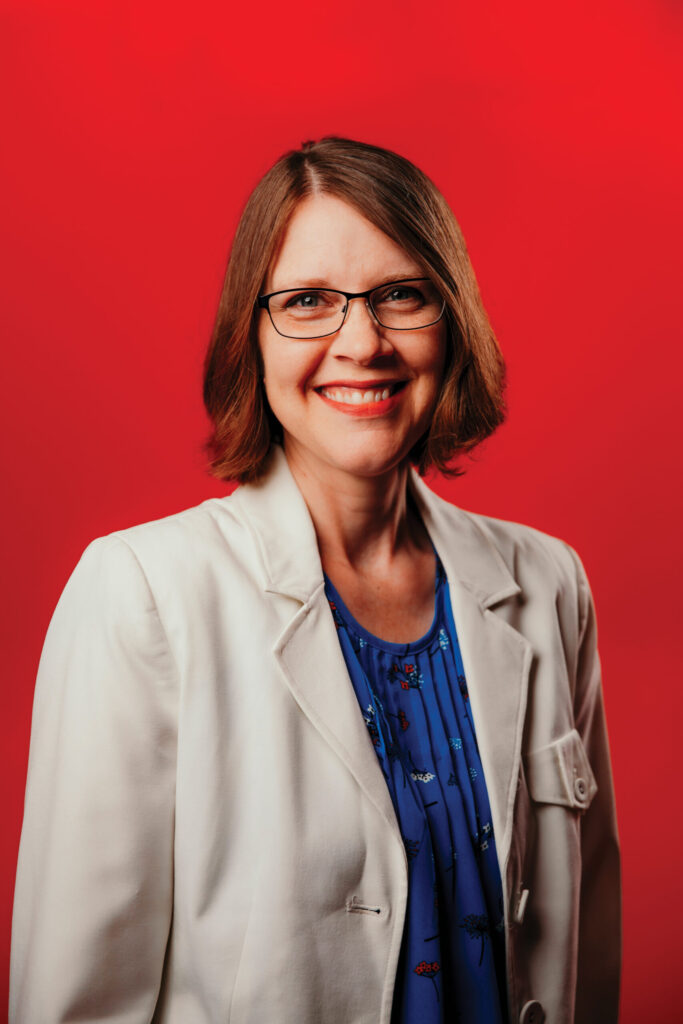 Letter from the chair
Letter from the chair
Another year has passed at Iowa State University’s Department of Agricultural and Biosystems Engineering, and it has been a great one. We are pleased to share that U.S. News & World Report ranked our graduate program as No. 2 for the fourth year, and our Biosystems and Agricultural engineering undergraduate program has been ranked No. 1 in the Nation! This achievement is a testament to the exceptional caliber of our students, who continue to elevate our department to new heights.
We welcomed new faculty members Hanwook Chung (data systems for animal wellbeing) and Philip Cox (leading the ABE Capstone) in 2024. We were also happy to celebrate the promotions of Gretchen Mosher to Professor, Saxon Ryan to Associate Teaching Professor, Tim Shepherd to Teaching Professor, and Brett Ramirez was appointed interim director of the Egg Industry Center. It is truly all the excellent people in ABE that make this department so strong.
Throughout the year, our department has accomplished amazing things. Our faculty and staff have continued to inspire and excel in their given fields. Their work has led to several multi-million-dollar grants, and their teaching and advising continue to support and mentor our students. Together, we have taken things to the next level, and I am filled with immense pride for the steadfast dedication shown by our faculty, staff, and students and the cutting-edge research that has driven us forward.
We enjoy seeing the great things our fellow ABE colleagues are doing, too! Please keep us in the loop about developments going on in your institutions. We encourage you to follow us on socials and stay connected with us, and we appreciate your interest in our program. Here’s to another year of championing the spirit of innovation at Iowa State!
Amy Kaleita, Professor and Department Chair
By the numbers
- 550 Undergraduate students
- 74 Graduate Students
- 29 TT/Ten. Faculty
- 11 Term Faculty
- 43 R&Dept staff
$20M+ in research expenditures
Top department at the University
US News & World Report
-
#1
undergraduate program nationwide
US News & World Report
-
#2
graduate program
nationwide
Awards
Thomas Brumm
• Massey-Ferguson Educational Gold Medal, ASABE
• Fellow, ASABE
Steven Freeman
• SMV Technologies Ergonomics: Safety and Health Award, ASABE
Matt Helmers
• ADS/Hancor Soil & Water Engineering Award, ASABE
Steve Mickelson
• Massey-Ferguson Educational Gold Medal, ASABE
Michelle Soupir
• Fellow, ASABE
Josh Peschel
• CAREER award, NSF
Nir Keren
• Gary Hawk Safety Award, Occupational Safety and Health Council
Daniel Andersen
• Interdisciplinary Team Research Award: RegenPGC, ISU
Matt Darr
• Regents Award for Faculty Excellence, ISU
Amy Kaleita
• Interdisciplinary Team Research Award: RegenPGC, ISU
Tamara Kerns
• Years of Service to Learning Communities (10), ISU
Anne Kinzel
• Interdisciplinary Team Research Award: RegenPGC, ISU
Raj Raman
• Interdisciplinary Team Research Award: RegenPGC, ISU
Thomas Brumm
• Distance Education Teaching Award, CALS
Jacqueline Comito
• Team Award: Iowa Learning Farms, Water Rocks! CALS
Brian Gelder
• Outstanding Achievement in Research Award, CALS
Hannah Preston
• Team Award: Iowa Learning Farms, Water Rocks! CALS
Brett Ramirez
• Early Achievement in Research Award, CALS
Elizabeth Ripley
• Team Award: Iowa Learning Farms, Water Rocks! CALS
Saxon Ryan
• Early Achievement in Teaching Award (Term), CALS
Tim Shepherd
• Excellence in Teaching by Term Faculty Award, CALS
Ann Staudt
• Team Award: Iowa Learning Farms, Water Rocks! CALS
Nathan Stevenson
• Team Award: Iowa Learning Farms, Water Rocks! CALS
Alena Whitaker
• Team Award: Iowa Learning Farms, Water Rocks! CALS
James Wright
• Faculty Award for Diversity Enhancement, CALS
Ryan McGehee
• Building a World of Difference Faculty Fellowship in Engineering, College of Engineering

International entrepreneur, researcher, product developer — and student
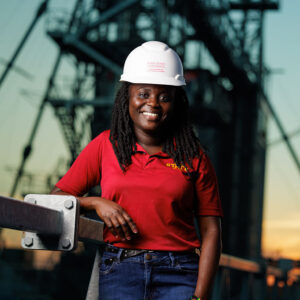 Esther Yeboah Akoto is a graduate student in Agriculture and Biosystems Engineering (ABE). Yeboah Akoto has a background in food science, but an unexpected shift in plans paused her progress toward a PhD in the United States. Returning to Ghana, she focused her efforts on food at home. Pinesod Foods is her startup that produces, rebrands, and distributes traditional Ghanaian foods.
Esther Yeboah Akoto is a graduate student in Agriculture and Biosystems Engineering (ABE). Yeboah Akoto has a background in food science, but an unexpected shift in plans paused her progress toward a PhD in the United States. Returning to Ghana, she focused her efforts on food at home. Pinesod Foods is her startup that produces, rebrands, and distributes traditional Ghanaian foods.
“I had to leave, and I was feeling discouraged. But I realized that I had my education. I had my head. I had my experience, I can make it happen,” Yeboah Akoto said.
The business was small at first, processing and distributing out of her brother’s home. Yeboah Akoto, her mother, and her brothers registered Pinesod with the FDA, and the business continues to grow. In 2022, still inspired to pursue her PhD, Iowa State’s reputation for innovation in food science and entrepreneurship captured Yeboah Akoto’s interest, and she returned to the U.S.
At Iowa State, Yeboah Akoto’s research identifies and establishes food safety standards for the ISU Kent Feed Mill. Recently published, her work can enhance efficiency, quality, and safety in feed mills nationwide.
“I am implementing my learning to help the industry, and I am gaining skills that lend well to my own business,” Yeboah Akoto said.
Already a successful entrepreneur and accomplished academic, Yeboah Akoto continues to experience Cyclone Engineering to its fullest.
“Iowa State has given me the grounds to be nourished, do my best, and seek my highest potential as an engineer,” Yeboah Akoto said.
BSE program in play, every day
Emily DeJesu always had a passion for the environment, math, and science which made biological systems engineering (BSE) at ISU an easy educational choice.
After graduating in 2021, DeJesu started her career in water conservation. Her first professional position helped add context to her education.
“I saw first-hand the big picture of where all our water comes from, the systems at work, and how precious it is. It’s amazing to see the things I learned in my undergraduate program in play every day.” DeJesu said.
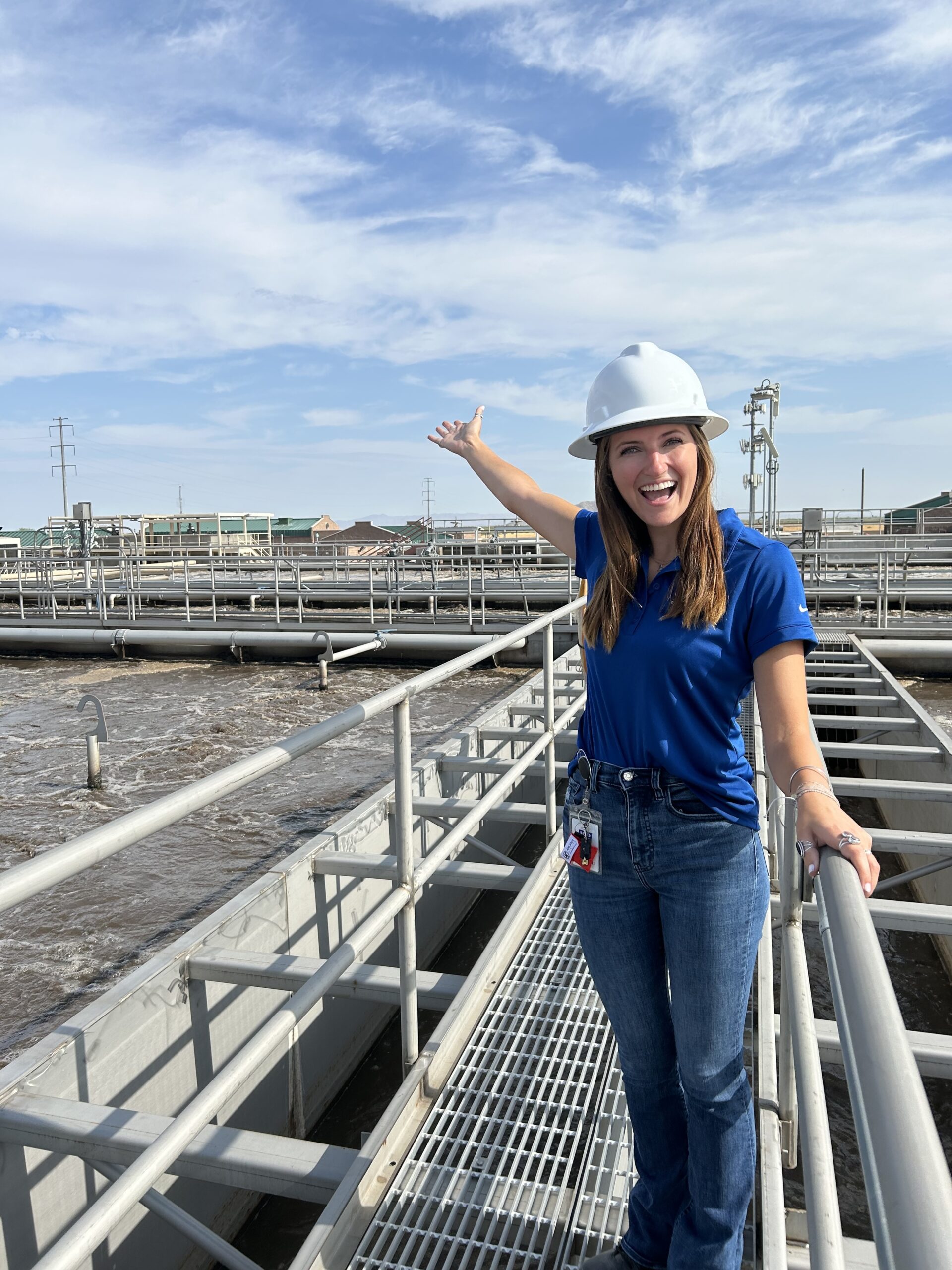
It’s amazing to see the things I learned in my undergraduate program in play every day.
Emily DeJesu
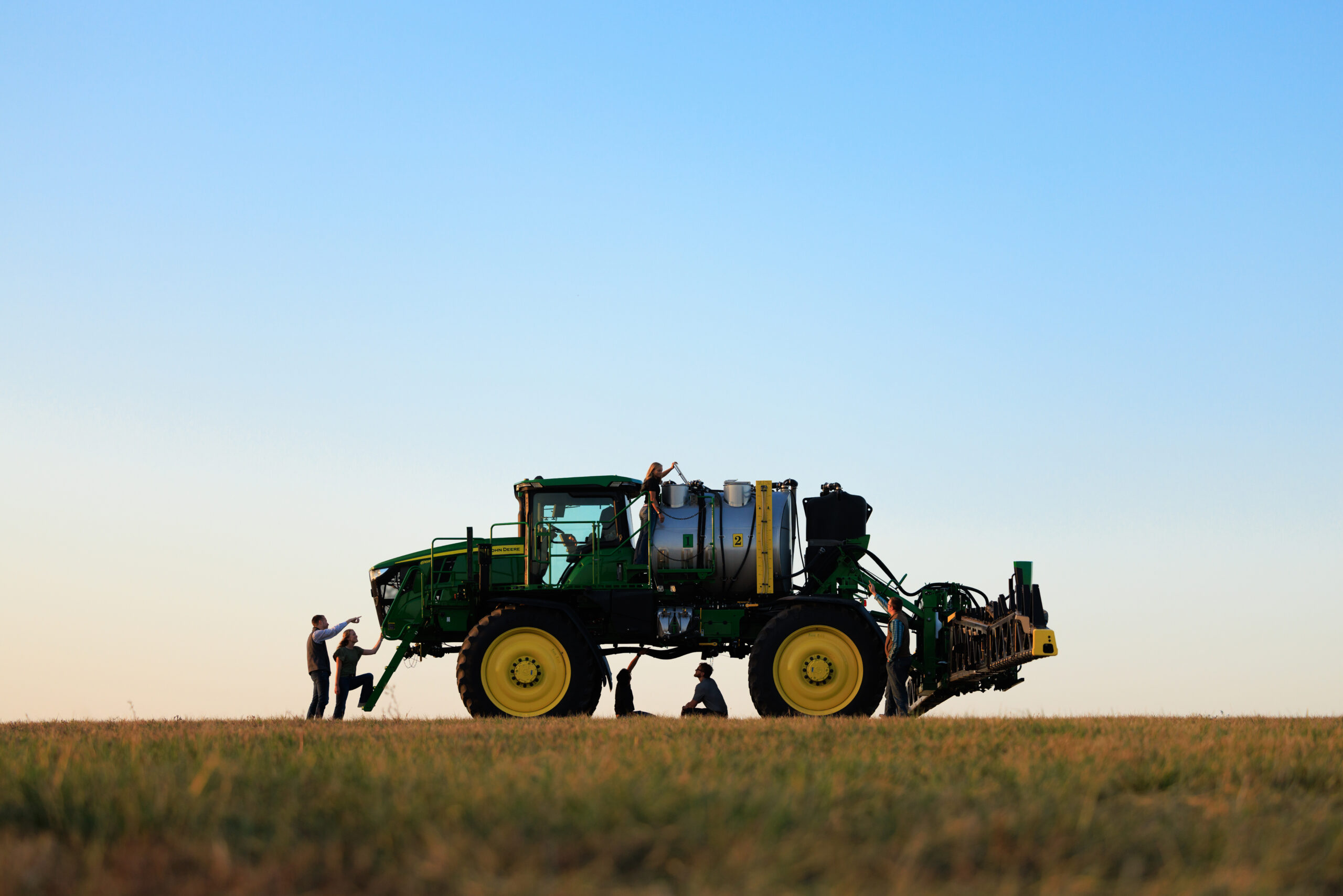
The Digital Ag Innovation lab connects industry challenges to novel solutions
The Digital Ag Innovation Lab works directly with companies and organizations to meet the increasing demand for industry sponsored research projects. When an innovative gap is identified, the Digital Ag team contributes thought leadership and technical expertise to pioneer solutions in collaboration with industry sponsors.
Led by John Deere Endowed Chair in Ag Innovation and Professor Matt Darr, the lab has a team of faculty, full-time professional staff, and students that support research projects, education and talent development, and extension and outreach efforts. Darr and Assistant Professor Bailey Adams have collectively mentored over 80 graduate students through their respective programs, and the team has provided experiential learning opportunities for hundreds of undergraduate research assistants over the years.
This team has achieved over 90 patents and distinct tech transfer outcomes and has directly impacted 59 agricultural products sold globally. In December 2024, Darr cut the ribbon for the Digital Agriculture Innovation Lab in partnership with Alliant Energy, located in the Iowa State University Research Park. Their new home boasts over 85,000 square feet of state-of-the-art facility with direct access to Iowa State testing fields.
“We are a team that shows up every day driven by the belief that we are bridging the gap between commercialization and research. We’re doing the work to get technologies to our farmers faster,” said Darr
The lab has supported a wide range of challenges brought by industry partners, engaging in areas like smart sensors and controls, digital agronomy, biomass logistics, yield estimations, precision spray application, vehicle chassis engineering, and more.
“We are proud to have such strong connections with industry. Our partners enable us to better reach global agricultural audiences with new production systems and technological innovations, and they are an integral part of our continued success,” said Adams.
Graduate student Grace Bjustrom finds value in the opportunity to conduct nontraditional research and development.
“Because we’re working to enable new system technologies, we’re collecting previously unknown complex data in new ways to reach our goals. It’s exciting to pave new pathways to innovating agricultural technology, bringing research lab results to real-world products,” said Bjustrom.
Engineering for the farmers
Growing up on a farm in rural Illinois, Matt Haas had a passion for Legos, agriculture, and hands-on work.
At Iowa State, Haas was a leader of the Cyclone Power Pullers, building multiple machines from the barebones, and completed several internships. Haas learned by doing.
“It was the best way for me to learn; hands-on, learn by fire and failures,” Haas said. “You don’t make the same mistake twice.”
Graduating from the agricultural engineering program in 2023, Haas took a position with CNH Industrial as a Design Engineer. He works with the functional and vehicle aspects of crop harvesters, putting his hands-on education to use every day. Haas analyzes current products and develops improvements to user experiences.
Throughout each step of his engineering journey, Haas still has the same goal in mind: Making a difference for farmers.
“Engineering is my gateway into making farmers’ lives easier. Making one farmer’s everyday life easier is a mission accomplished,” Haas said
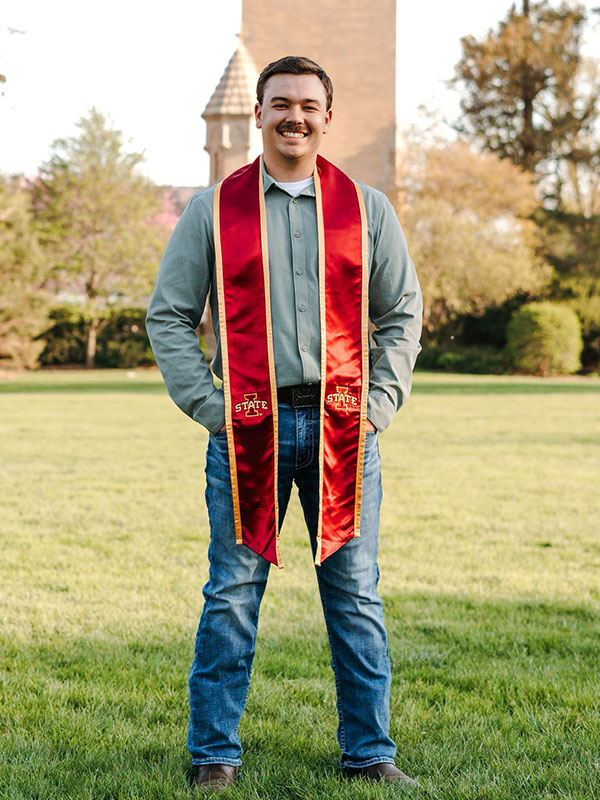
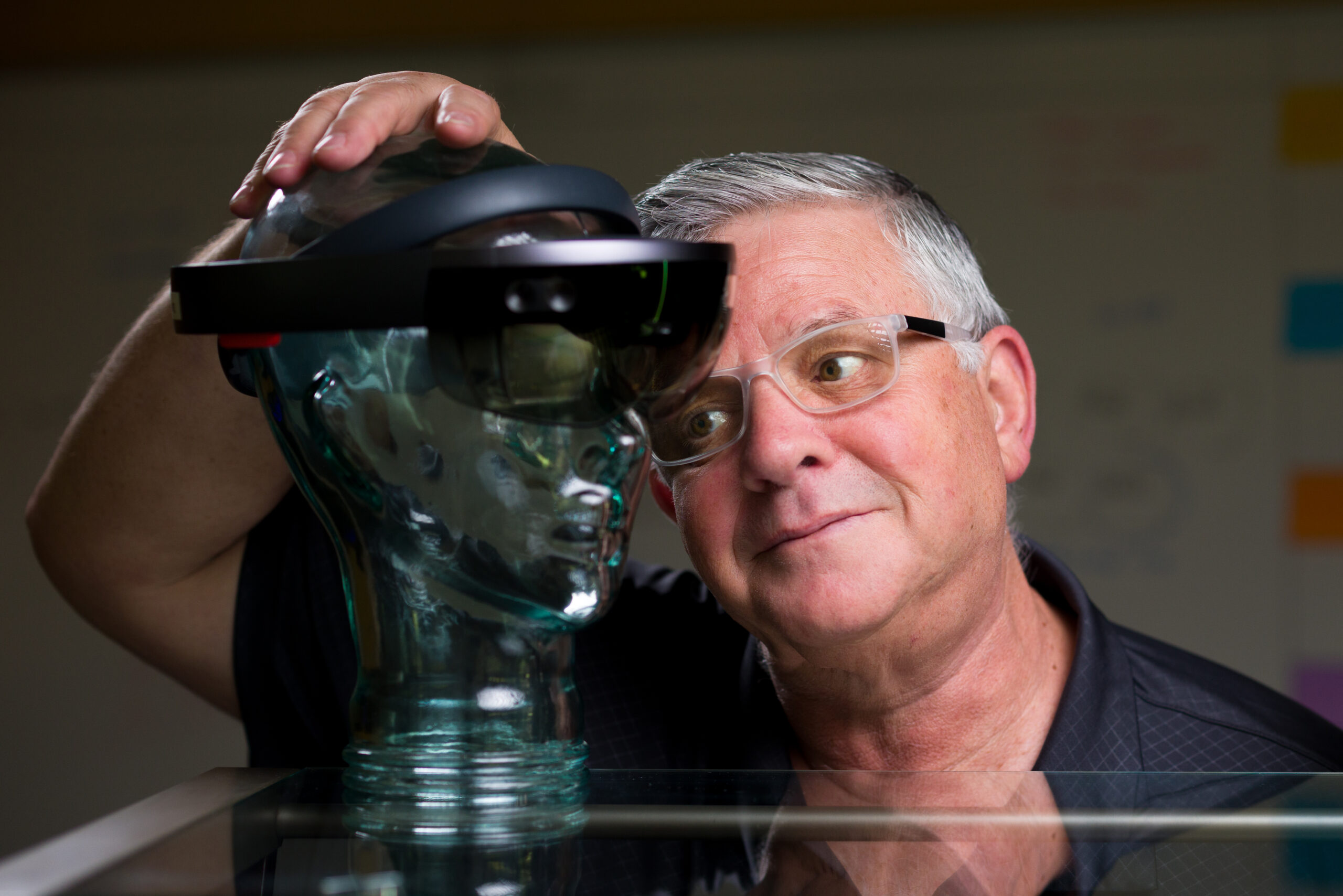
Simulating stress to safely feel the heat
The future of fire safety training and emergency preparedness is a generated reality accessed with a pair of goggles and two remotes.
Nir Keren, associate professor of occupational safety, has been working with virtual simulations to mimic conditions to gauge performance and cognitive processing since 2005. He started a fire training program from the ground up, developing the simulation natively alongside the Ames Fire Department Deputy Chief at the time, Shawn Bayouth.
“At first, the users were hesitant, but eventually, the physiological response takes over, and adrenaline kicks in. Suddenly, they feel like they are in the fire, with their hearts pumping, and panic affecting their decision-making when in the simulations,” said Keren.
Over the last decade, with technology advancing at an unprecedented speed and artificial intelligence becoming more accessible, the training simulation has grown into a tool used to understand stress levels and physio response to train firefighters across the nation.
The current iteration of the training is built using a game engine, allowing the user to interact with the environment from their perspective, look around from different angles, pick up debris, walk up the stairs, and use different tools to contain the emergency.
“We were the first simulation developed to evaluate firefighter’s decision-making in virtual reality. Previously, the only way to capture their experience was after the emergency concluded, and the individuals recounted their response to an event,” Keren said.
In another addition to the evolution of Keren’s fire training program, he and his team have created a virtual Fire Incident Commander. Responding in a conversational manner, the virtual AI Fire Incident Commander uses artificial intelligence technology and machine learning to interact with firefighters as they confront a fire simulation in real time.
“This allows for full immersion and adds to their emergency preparedness. Our virtual AI Fire Incident Commander helps the users enhance their situational awareness and understand what support they need in different situations; the technology helps define the gaps in existing training to continue preparing those facing danger every day without compromising their safety,” said Keren.
The impact of Keren’s training simulations could reach far beyond well-funded fire departments. As this technology matures, it is projected to bring high-quality training to regions where hands-on practice facilities are scarce or unavailable, ensuring more first responders are better prepared to protect their communities.
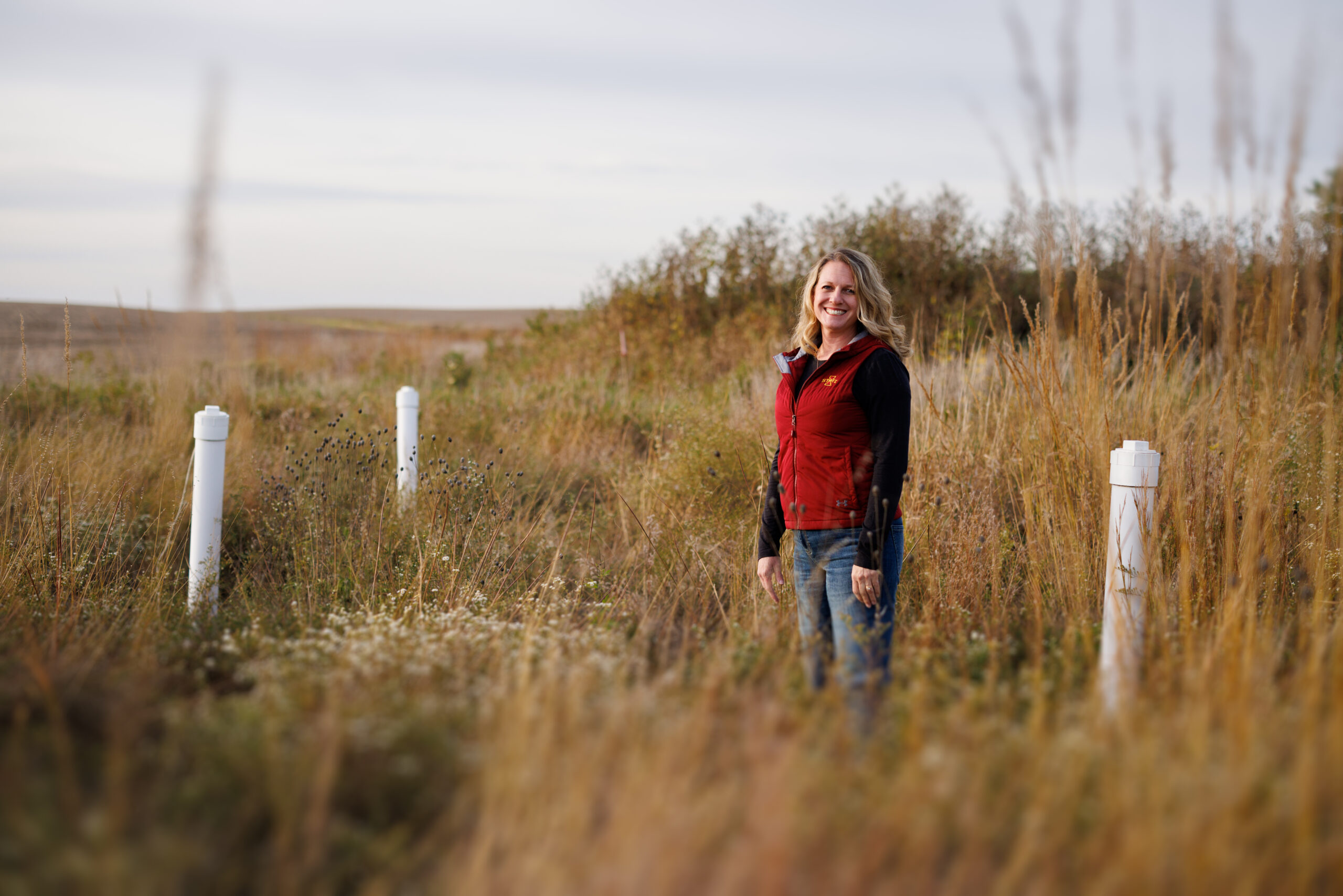
International recognition, local impact: Michelle Soupir
Michelle Soupir, professor of agricultural and biosystems engineering and recent ASABE fellow, has authored over 119 peer-reviewed pieces and taught courses in nonpoint source pollution and control, water quality modeling, and project management and design. Since joining the department 16 years ago, she has built the impactful Water Quality Research Lab and team, collaborating on projects with many state and national organizations.
“We’ve worked hard over the years to ensure our research questions are relevant to Iowa and the Midwestern US, but also of national and international impact. This has allowed us to secure funding from a wide variety of Iowa groups, including the Iowa Egg Council, Iowa Egg Industry Center, Iowa Soybean Association, Iowa Nutrient Research Center, Iowa Department of Natural Resources, as well as federal programs like the United States Department of Agriculture, Environmental Protection Agency, and National Science Foundation,” Soupir said.
Soupir’s research program focuses on understanding the impacts of agricultural practices on water quality, designing conservation practices, and monitoring environmental responses of agricultural systems. The programs involve undergraduate and graduate students as well as full-time researchers. In addition to research, Soupir conducts outreach events with local farmers and industry personnel to improve processes and inform those practicing them.
“It’s so important to be connected with communities to understand the real challenges and ensure that our work provides benefits to the environment, but also is achievable in the field to be implemented for real water quality improvements,” said Soupir.
Cyberry Shortcake
The annual American Society of Agricultural and Biological Engineers (ASABE) Robotics Competition happens at the ASABE International meeting; this year, the team went Anaheim, California. Undergraduates Allison Singer and Ellen Halbur, studying biosystems engineering, and Elise Henrichsen, studying agricultural engineering, were recruited by Associate Professor and recent NSF Career Award recipient, Joshua Peschel to represent Iowa State in the upcoming competition.
“It has been a joy to watch these students develop individually and as a team over the last year. Each exhibits the qualities we deeply value in our students: drive and excellence in the classroom and a strong commitment to our profession through their activities on this project,” said Peschel.
The robot is scored on how many 3D-printed strawberry leaves it identifies as outliers, and the time it takes to do so. The team collaborated throughout the process of coding, developing, and building their robot, affectionately named Cyberry Shortcake. Experience with robot vision and new technologies in the agriculture field has equipped these students with new tools for their futures.
“This experience has introduced me to robotics, and I look forward to learning more about possible career paths involving agricultural technology,” said Henrichsen.

Credits
Amy Kaleita, Professor and Department Chair
Writing: Anna Keplinger
Design and Illustration: Madeline Willits
Photography: Ryan Riley and Sarah Hays
Webpage: William Beach and Madeline Willits

